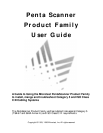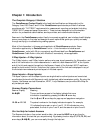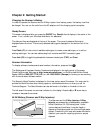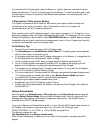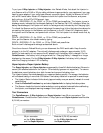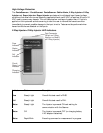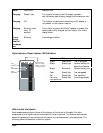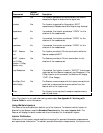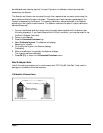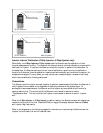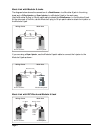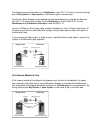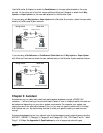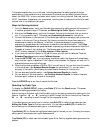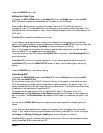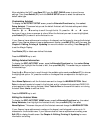
Injector
Measurement Required? Description
Attenuation Yes The Injector generates the frequencies and the Scanner
measures the signal to determine the signal loss.
Autotest Yes The Injector is required for Attenuation, NEXT
measurements, Resistance and Wire Map during Autotest.
Capacitance No If connected, the Injector provides an “OPEN” for the
duration of the measurement.
Length No If connected, the injector provides an “OPEN” for the
duration of the measurement.
Impedance No If connected, the injector provides an “OPEN” for the
duration of the measurement.
NEXT - Scanner Yes The Injector provides a 100 ohm termination while the
End Scanner measures NEXT.
NEXT - Injector Yes The Scanner provides a 100 ohm termination for the
End (2-Way duration of the measurement.
Injector+/2-Way
Injector only)
Loop Resistance Yes If connected, the Injector is used to “SHORT” the wire pair
under test and the Scanner measures Loop Resistance. If the
2-Way Injector is not connected, the Scanner will display
“OVR” (Over Range).
Wire Map (Find Yes The Scanner communicates with the Injector across the link
Cable Faults) under test to determine the wire connection from the
Scanner end to the Injector end.
Noise No The Injector is not required to measure impulse noise or
peak-to-peak noise.
Note: The Injector is not used when testing coaxial cable. See Appendix D: Working with
Coaxial Cable for more information.
Using Multiple Injectors
One Scanner can store calibration data for up to five Injectors. To determine which Injector is
attached to the Scanner, press the Extended Functions key, then select Injector Info. The
Scanner will display the serial number and other information for the attached Injector.
Injector Calibration
Calibration of the Injector’s signal amplitude is required for accurate Attenuation measurements
and requires user intervention. To maintain accurate Attenuation measurements, the Injector must



